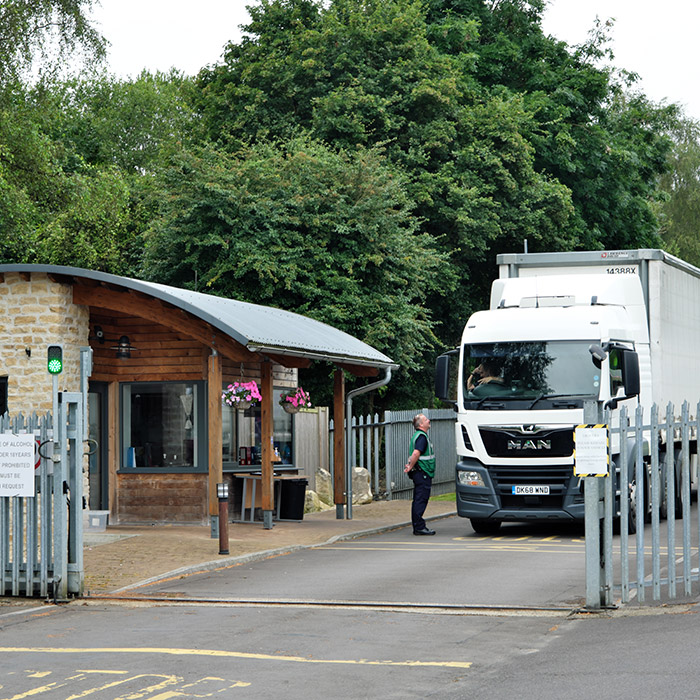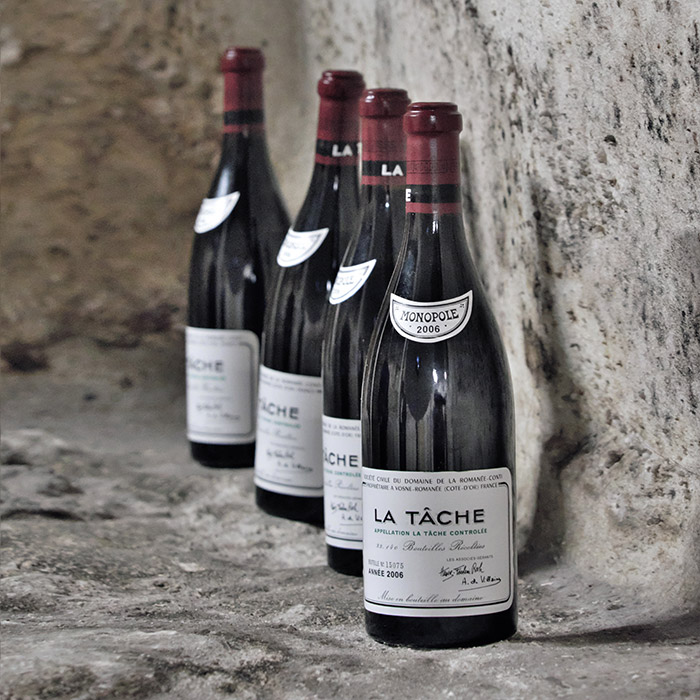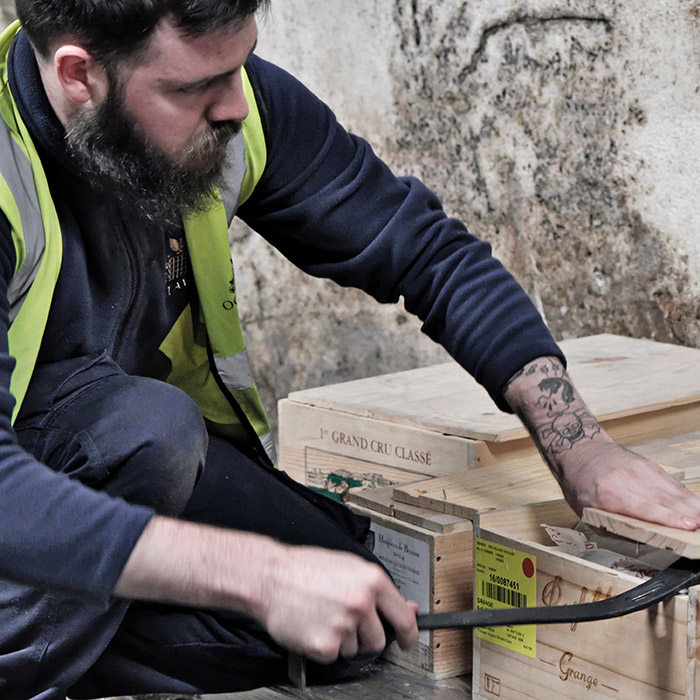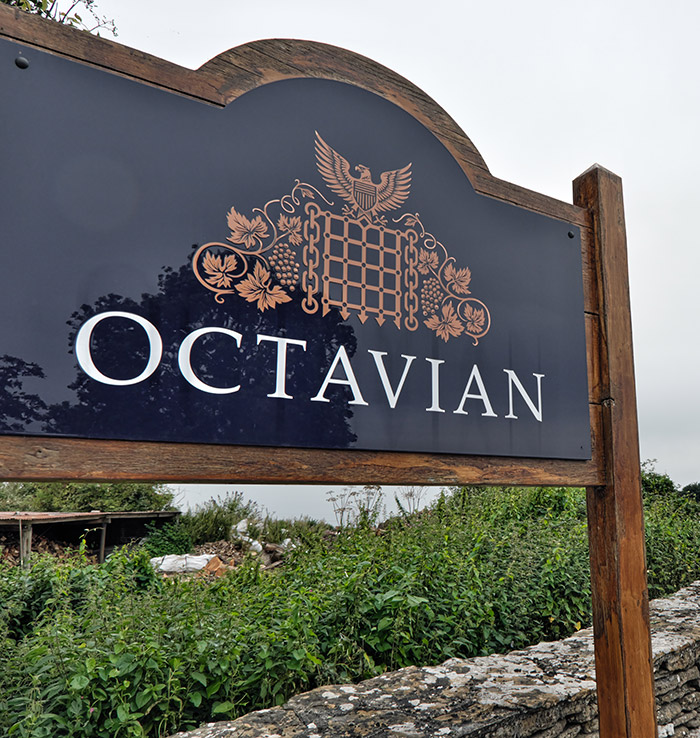Somewhere in the south of England lies what is probably the most valuable wine collection in the world: nine million bottles worth around 1.2 billion euros are well hidden - and well secured - in an old mine. Matthias Stelzig was able to look around at a depth of 30 metres.

"How long are the tunnels down here? Nobody knows." The man casting a controlling glance at the laptop in his teeny-tiny office deep underground should know. But Vincent O'Brien, the chief financial officer of the Octavian, perhaps the largest wine warehouse in the world, has never worked it out. The modest office with a formica table in front of bare walls is deceptive: with his Excel spreadsheets, the accountant manages around nine million bottles of wine in stock - and can access every single bottle at the click of a mouse.
The Octavian in Wiltshire in southern England is a warehouse where any private wine fan can also let his wine mature. In the branching corridors of the former mine, wines and spirits from around 10,000 customers with a total value of 1.2 billion euros languish. That works out to an average of 130 euros per bottle. Outside Vincent's office door, the 93,000 square metres of mine tunnels are a constant twelve to 14 degrees Celsius. There are almost no temperature fluctuations 30 metres underground. The humidity is an equally constant and optimal 80 per cent. "Temperature and humidity ensure that the wines don't exchange with the air, their greatest enemy," Vincent explains, "that's our great potential." He takes his guest on a walk through nowhere-ending corridors. The map of the mine on the wall looks like a hidden object. In the 19th century, the amber-coloured sandstone was quarried here, which London patricians used to build luxurious villas in the nearby and famous seaside resort of Bath.

Underground, you feel more like you're in a bunker with a maze of conduit shafts and pipes. Fans as high as men provide breathable air. Here and there a few rooms are closed with heavy steel doors. The atmosphere is so impressive that the old mine has already served as a backdrop for a war film. German words spray-painted on the walls, such as "Achtung" and "Gefahr", which you can still read today, briefly transformed the tunnels into Nazi quarters.
Today, wooden crates pile up to the ceiling on the left and right, the origins of which wine freaks can only pronounce with awe: From Angelus to Yquem, Drouhin to Roumier, Harlan to Screaming Eagle, Selosse to Jacquesson and Cannubi to Masseto, the best of the best are gathered here.
In contrast to the raw walls, the floors are asphalted so that the forklifts have a clear run. "Two kilometres on average," says Vincent, explaining that this is the average distance travelled when a bottle is taken out of the dungeon. In front of us, an industrial truck pulls a pallet from the shelf. A quick glance at the crates: the equivalent value corresponds to a solidly equipped building savings contract.
The Octavian is appropriately secured. Only a polished marble slab at the side of the road indicates the access road. At the end of the road is the end - at least for normal mortals. A steel gate, barbed wire fence with steel spikes, 24-hour camera surveillance and a gatehouse that looks more like a border crossing protect the grounds. No one gets in there who doesn't belong. Even the delivery drivers have no access outside their shifts.

Visitors are given a high-visibility waistcoat, an oxygen bottle for use in case of fire and a safety briefing: in case of fire, you are supposed to avoid the flames and wait for the fire brigade. In an emergency, the chances of rescue are good. The chip card you wear around your neck reports every movement to the control centre via sensors in the corridors. "We have them more in case someone gets lost here," says Vincent. But the endless corridors are not even surveyed.
Professional wine thefts are more common in the scene these days, even in well-secured cellars. For the Octavian, a break-in would be the GAU. But even if gangsters were to make it to the inner sanctum in James Bond villain style, they would first have to bring the loot to light and then make off unnoticed in the rural area. Fraudsters also have a bad chance: customers have to show identification, traders have to be registered in the trade register, and in case of doubt there is a background check before a storage space is allocated. Prospective customers with criminal records and operators of letterbox companies ask in vain.

When the newly delivered bottles have been transported by lorry some 30 metres down the shaft, Vincent and his team cast a few stern glances at the crates and bottles. Every warehouse worker is trained for at least six months and can recognise even a well-faked Domaine Romanée Conti. Even the wooden crates are inspected individually. The owners can have previous damage repaired, and woodworms are treated discreetly and without being asked. Because a plague would be unthinkable. The in-house photo studio takes 8,000 photos per month. On the high-resolution pictures, every little blemish in the label can be seen. If there is any doubt, the customer is informed before the bottle goes into stock. This also applies to suspected forgeries. A bottle at Octavian should be as beyond doubt as possible. Its crate is given a number that accompanies it forever and a sticker on which all data is stored. "Even if a bottle is only moved for a short time, we can track that in the system," explains IT manager John Cording, "and we store that permanently.".
The computer also sounds the alarm for unwanted movements. "Especially if it goes to the wrong address in shipping," says John, pausing for effect. "If. Our error rate is 0.001 per cent." A wine stored at Octavian also goes up in value. Auction houses like Sotheby's have long liked to refer to the noble address. Some time ago, the hammer fell on a bottle of Macallan single malt whisky stored in the Octavian for the equivalent of 2.2 million euros.
But it is not only the noble auction houses that profit from the reputation of the old mine. Customers of the Octavian can also trade among themselves. For them, this has some advantages: The customer does not have to have the bottles checked for authenticity, pick them up somewhere or organise transport. In addition, the Octavian is a duty-free warehouse. This saves the customers high amounts of tax. "In some months, sales in the six-figure range are handled here without the bottles leaving the gallery," Vincent says with an unconcerned expression. Yet they are well insured: "Always at market value," the manager emphasises, "not at purchase price.".
These conditions are also liked by investors, who can take advantage of the price jumps here without expensive fees. "But most customers are private collectors," Vincent emphasises. Now one or the other anecdote about celebrities or a well-known politician would have to follow. Sure, among the customers are stars, monarchs and other famous personalities. But their names remain in the safe tunnels of Octavian. Just like the wine.
